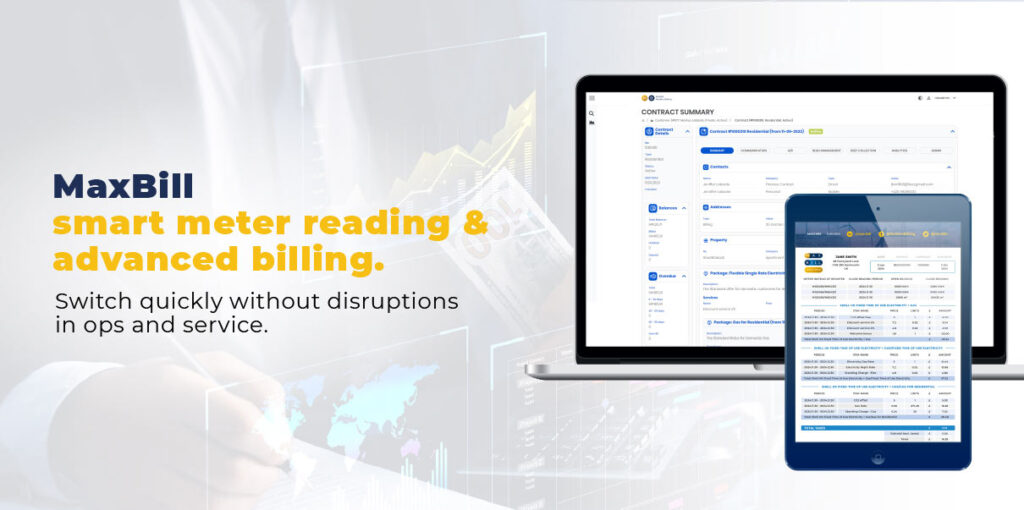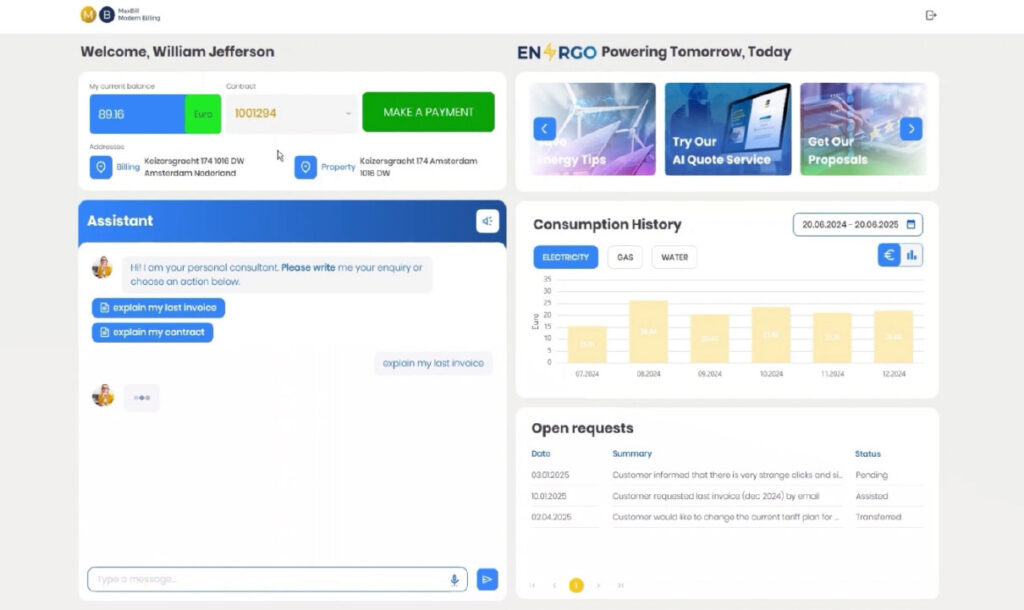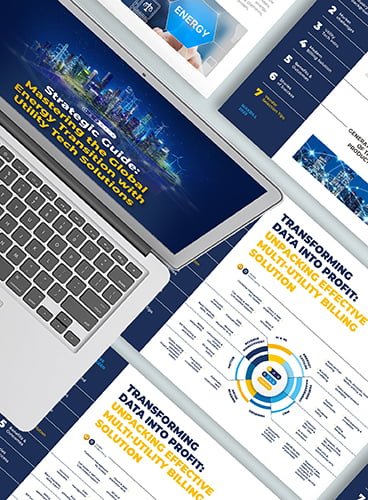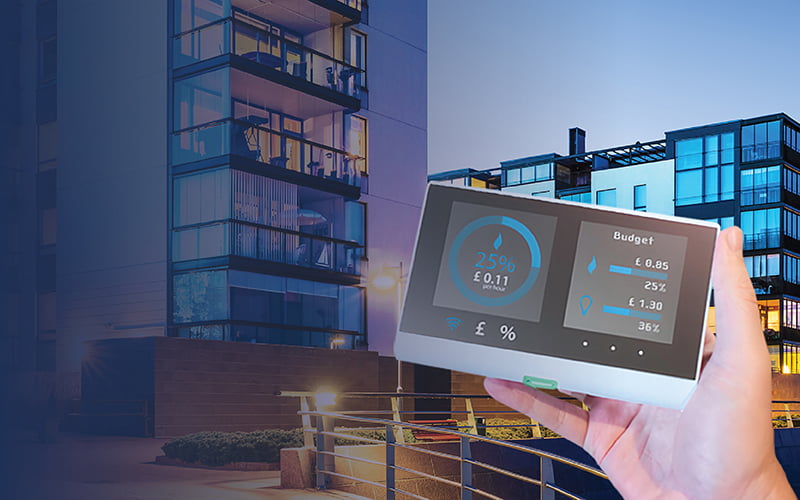Ofgem has confirmed that starting 30th June 2025, the Radio Teleswitch Service (RTS) will enter a managed phase-out, as it nears the end of its operational life. The RTS signal will be switched off in stages, affecting small groups of meters at a time to minimise disruption.
Households with RTS meters are often used to control heating or hot water may experience service interruptions unless their meter is replaced with a modern alternative.
Key implications:
- RTS meters will gradually stop receiving switching signals.
- Energy suppliers and consumers must take action to replace RTS meters in time.
- Lack of replacement could result in disrupted heating or hot water supply
In this piece, you’ll discover how to get ready for the phase-out across meter reading, billing, and customer service.

MaxBill meter reading for the UK SMETS2 meters
RTS meters are typically being replaced with smart meters, specifically SMETS2 meters (Smart Metering Equipment Technical Specifications 2), which are the current standard in the UK.
MaxBill meter reading module supports the following types:
- SMETS2 Smart Meters: These are the preferred replacement, offering full remote communication capabilities with the central Data Communications Company (DCC). They support flexible time-of-use tariffs and automated switching without relying on the RTS radio signal.
- Dual-rate or Economy 7 compatible smart meters: For customers previously on RTS-controlled tariffs like Economy 7 or Economy 10, suppliers are providing smart meters that can handle multiple time-of-use rates.
- Smart heating controls (in some cases): For setups where RTS was used to control heating, suppliers may also offer updated smart controllers or time switches compatible with smart meters.
Replacing legacy multi-rate billing systems with smart meter-compatible billing
The billing for Radio Teleswitch Service (RTS) relied heavily on legacy multi-rate billing systems, typically designed for:
- Multi-rate Tariffs: Commonly Economy 7, Economy 10, or even more bespoke tariffs like Heatwise or Comfort Plus.
- Time Pattern Switching (TPS): RTS allowed suppliers to remotely change when off-peak rates applied via radio signal.
- Fixed Time Profiles: Billing systems were built to recognize the set RTS-controlled time bands for off-peak rates and apply them manually or semi-automatically.
These systems were rigid (limited flexibility in tariff design), often batch-based and not real-time, and tightly coupled to the meter’s configuration (which could not be easily changed).
However, this kind of billing system cannot fully serve smart meters, at least without major upgrades or replacements.
Smart meters, especially SMETS2, enable dynamic, time-of-use (ToU) tariffs and real-time data exchange, which require much more modern, flexible billing capabilities.

So, the key 4 billing capabilities should be:
- Half-hourly settlement (as per Ofgem’s Market-Wide Half-Hourly Settlement reform).
- Automated tariff configuration and dynamic updates.
- Consumption-based billing with flexible pricing models.
- Full integration with smart metering infrastructure (DCC).
If utilities want to continue seamless service, they need to migrate from RTS-compatible billing to solutions that support:
- Smart meter data ingestion
- Real-time or near real-time billing
- Dynamic pricing models
- Digital self-service portals for smart meter customers
Communicating with customers across a changeover
RTS affects heating and hot water, their essential daily needs. That’s why proactive customer communication paired with effective self-service tools will determine whether it’s smooth or disruptive.
Besides, customers may not know what RTS is or that their meter uses it. If left uninformed, they may experience sudden disruptions or blame their supplier for service failure.
And we all know how Ofgem ‘treat’ suppliers that provide bad customer service… and how mass media jumps on such news.
What do suppliers need to focus on in the comms, in the first place?
Suppliers need to inform customers that RTS is being switched off and how it affects them. It’s recommended to communicate timelines clearly, staged switch-offs mean some customers have more time than others.
Another important communication point is guidance. Step-by-step instructions on what to expect, how to book a meter replacement, and what it involves should be added to the comms messages. Plus, customers should have access to available help: phone support, live chat, or self-service.
Last but not least, service providers can build trust by explaining the benefits of smart meters (e.g., more accurate bills, flexible tariffs, better control).
Utility self-service portals: MaxBill AI self-serve

AI agents can be tremendously helpful here without human intervention. Not only do they handle up to 83% of incoming queries, but also explain what RTS is, how smart meters work, and what happens next.
Customers can book a smart meter installation directly, view available slots, and reschedule if needed. The process is simplified: once they type the request, AI agents pick up and requests are being created instantly.
They literally explain everything like the installation status, confirm technician visits, or report post-installation issues. After the installation, agents tell real-time usage, explain new tariff options, and notify if unusual consumption is in place.
By implementing AI self-service, utilities get their call centers’ burden reduced, AI-driven communication prevents complaints and regulatory fines, and builds long-term digital engagement with customers.

Frequently Asked Questions
What is the Radio Teleswitch Service (RTS) and why is it being phased out?
The Radio Teleswitch Service uses longwave radio signals to control electricity tariffs and heating systems remotely. However, as broadcasters like the BBC retire these longwave transmissions, the technology behind RTS is becoming outdated, prompting a planned and gradual discontinuation.
When will the RTS phase-out happen?
The phase-out of RTS began on 30 June 2025 and will proceed in stages rather than all at once. This managed approach allows energy providers to replace affected meters over time, minimizing disruption.
Will vulnerable customers or those needing extra support be protected?
Energy companies are required to identify customers who may need extra help, such as those on the Priority Services Register, and provide tailored support throughout the RTS phase-out to ensure nobody is left without essential heating services.
How does this affect businesses using RTS meters?
Businesses that depend on RTS meters for off-peak electricity tariffs risk facing inaccurate billing or heating disruptions if they don’t upgrade in time. It’s crucial for business owners to liaise with their suppliers promptly to avoid operational setbacks.
How can an energy supplier get ready for the RTS phase-out?
Energy suppliers can ensure a smooth and efficient transition during the RTS phase-out by adopting advanced management and billing platforms like MaxBill. MaxBill offers a comprehensive solution that streamlines meter replacement scheduling, customer communication, and data management, helping suppliers coordinate the upgrade of RTS meters to smart or alternative metering systems seamlessly.
By leveraging MaxBill’s automation and analytics capabilities, suppliers can proactively identify customers needing extra support, prioritize appointments, and maintain high service standards throughout the phase-out process. This approach not only minimizes disruption for consumers but also helps suppliers meet regulatory obligations and deliver transparent, timely updates to all affected households and businesses.
How can MaxBill streamline customer communication during RTS phase-out?
MaxBill can significantly streamline customer communication during the RTS phase-out by providing energy suppliers with a unified, intelligent customer experience management platform tailored for utilities. Key ways MaxBill supports this include:
- Centralized Customer View
- Multi-Channel Communication
- Automation and Workflow Management
- AI-Driven Self-Service Portal
- Prioritization of Vulnerable Customers
- Comprehensive Communication History
How MaxBill’s AI portals personalize communication during RTS phase-out
MaxBill’s AI-powered customer portals personalize communication during the RTS phase-out by leveraging artificial intelligence and machine learning to tailor interactions based on each customer’s unique profile and needs. Specifically, the portals:
- Analyze customer data
- Provide proactive notifications and reminders
- Offer intelligent self-service options
- Identify vulnerable or priority customers
- Continuously learn from interactions
In what ways can MaxBill assist in managing meter replacement scheduling efficiently
MaxBill can assist energy suppliers in managing meter replacement scheduling efficiently during the RTS phase-out through several key capabilities:
- Automated Workflow and Business Process Management (BPM)
- Integrated Customer Relationship Management (CRM)
- Multi-Channel Customer Communication
- Real-Time Data Synchronization
- Phased and Modular Implementation
- Audit Trails and Compliance Reporting
































